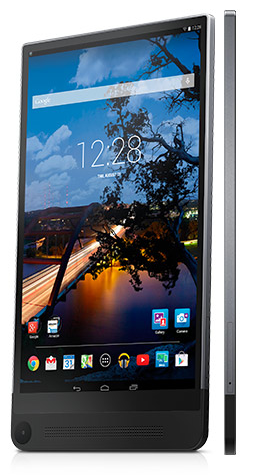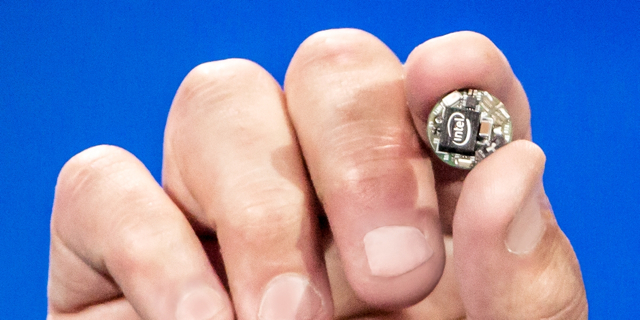Intel CEO Brian Krzanich Predicts New Consumer Tech Wave
January 6, 2015
A flying camera, an invisible piano keyboard that can be played, sensors that help the visually impaired navigate the world… these are just some of the technologies that will make 2015 a watershed year. “It’s the beginning of the next consumer technology wave,” said Intel CEO Brian Krzanich in his CES keynote address. “The last time we saw a wave of change this big was 20 years ago today, in 1995, with a revolution in consumer computing with the Pentium processor and first commercial browsers.”
“We’re going from a two-dimensional world to a three-dimensional world, which will change how we experience computing,” he added, naming three aspects of the 2015 wave of change: computing unleashed, intelligence everywhere and the wearable revolution.
 Computers will interact in three-dimensional space, see and hear, and become wire-free, according to Krzanich. The new 3D Dell Venue 8 (right), an Android tablet priced at $399, uses Intel’s RealSense cameras. In another demo, a chef controlled a video recipe with gestures and voice commands.
Computers will interact in three-dimensional space, see and hear, and become wire-free, according to Krzanich. The new 3D Dell Venue 8 (right), an Android tablet priced at $399, uses Intel’s RealSense cameras. In another demo, a chef controlled a video recipe with gestures and voice commands.
Krzanich reports that seven Intel partners are coming out with RealSense-enabled devices. Intel and Marriott are partnering to provide wireless chargers in some of their properties in Q3/4 2015. Intel is also working with Hilton, Jaguar, Land Rover, and major computer manufacturers.
Dion Weisler, HP EVP of printing and personal systems, demonstrated HP’s new Sprout, with a built-in RealSense camera. Sprout enables users to bring objects from the physical world into the digital world. HP is also entering the 3D printing field with the Multi-Jet Fusion 3D printer, which Weisler dubs “a tool to trigger the next Industrial Revolution.”
With regard to Intelligence Everywhere, Krzanich notes that IoT’s fundamental concept is to add connectivity to everything in our lives. He demonstrated advances to the smart home as well as iRobot’s new Ava robot. Equipped with a 3D camera and a display, Ava allowed iRobot CEO Colin Angle to speak remotely from Boston; Ava then moved offstage autonomously. In another demonstration, smart drones navigated a daunting obstacle course.
The Wearable Revolution just began a year ago, suggests Krzanich. “They are a natural extension of computing,” he said. Powering the next-gen wearables is Intel’s latest computer: Curie, which includes a processor and sensors and is as small as a button. Curie (below) will be available in Q3/4 2015.
“Curie is really meant to be a platform,” Krzanich said. “This product can deliver wearables in a range of form factors and changes the game of wearables.” He also announced a new wearables partner in the fashion space, Oakley.
Intel has also been working on using RealSense to give visually impaired people a better sense of their environment. An Intel employee who is visually impaired talked about how his shirt — outfitted with sensors that vibrate when people or objects approach — has changed how he navigates the world. Intel will make the technology available to other developers.
The first place winner of last year’s Make It Wearable contest — Nixie — demonstrated its flying camera that otherwise resides on the wrist. Krzanich announced that the 2015 Make It Wearable contest will be “bigger and better.”
Lastly, Krzanich announced Intel’s commitment to inclusion and diversity. “I’m here to say tonight, it’s time to step up and do more,” he said. “It’s not good enough to say we value diversity and not have our industry reflect that with women and under-represented minorities.” Intel pledges to reach full representation in its workforce by 2020, and will invest $300 million to back-up the efforts to reach that.


No Comments Yet
You can be the first to comment!
Sorry, comments for this entry are closed at this time.